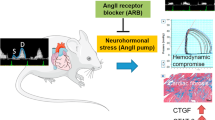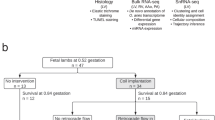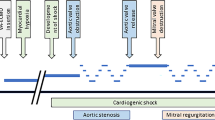Abstract
ABSTRACT: The purpose of this investigation was to determine the role of increased ß-adrenergic activity in regulating the increase in myocardial oxygen consumption that occurs during hypoxemia in unanesthetized newborn lambs. Through a left thoracotomy, fluid-filled catheters were placed in the ascending aorta, coronary sinus and left atrium, a pressure transducer was introduced into the left ventricle, and pacing wires were sutured onto the left atrium. The lambs were studied 3 d later by making intermittent measurements of aortic and coronary sinus blood oxygen saturations and Hb concentrations, left ventricular myocardial blood flow, cardiac output, heart rate, left atrial and aortic blood pressures, the maximal first derivative of left ventricular pressure, aortic and coronary sinus blood oxygen contents, the arteriovenous difference of oxygen across the left ventricular myocardium, myocardial oxygen consumption, and external cardiac work (aortic mean blood pressure times cardiac output). In nine lambs with an intact ß-adrenergic nervous system (group 1), the above measurements were made during a control period and during hypoxemia (Fio2=0.08-0.10) with spontaneous tachycardia. In another group of 12 lambs (group 2), the measurements were made during a control period, after ß-blockade (1.5 mg/kg intravenous propranolol) with pacing at the control heart rate, during hypoxemia with pacing at the control heart rate, and during hypoxemia with pacing-induced tachycardia. In the group 2 lambs, ß-blockade completely inhibited the increase in heart rate, maximal first derivative of left ventricular pressure, cardiac output and cardiac work that occurred during hypoxemia in the group 1 lambs that had an intact ß-adrenergic nervous system. In contrast, by comparing the results in groups 1 and 2, it is evident that ß-blockade inhibited no more than 75-80% of the increase in myocardial oxygen consumption that occurred during hypoxemia in the group 1 lambs with an intact ß-adrenergic nervous system. This study demonstrates that ß-adrenergically mediated increases in heart rate, left ventricular contractility, and external cardiac work account for no more than 75-80% of the increase in myocardial oxygen consumption during hypoxemia in unanesthetized newborn lambs. The factor(s) that are responsible for the residual increase in myocardial oxygen consumption remain to be determined.
Similar content being viewed by others
Log in or create a free account to read this content
Gain free access to this article, as well as selected content from this journal and more on nature.com
or
Author information
Authors and Affiliations
Rights and permissions
About this article
Cite this article
Fisher, D. β-Adrenergic Influence on Increased Myocardial Oxygen Consumption during Hypoxemia in Awake Newborn Lambs. Pediatr Res 25, 585–590 (1989). https://doi.org/10.1203/00006450-198906000-00007
Received:
Accepted:
Issue date:
DOI: https://doi.org/10.1203/00006450-198906000-00007



